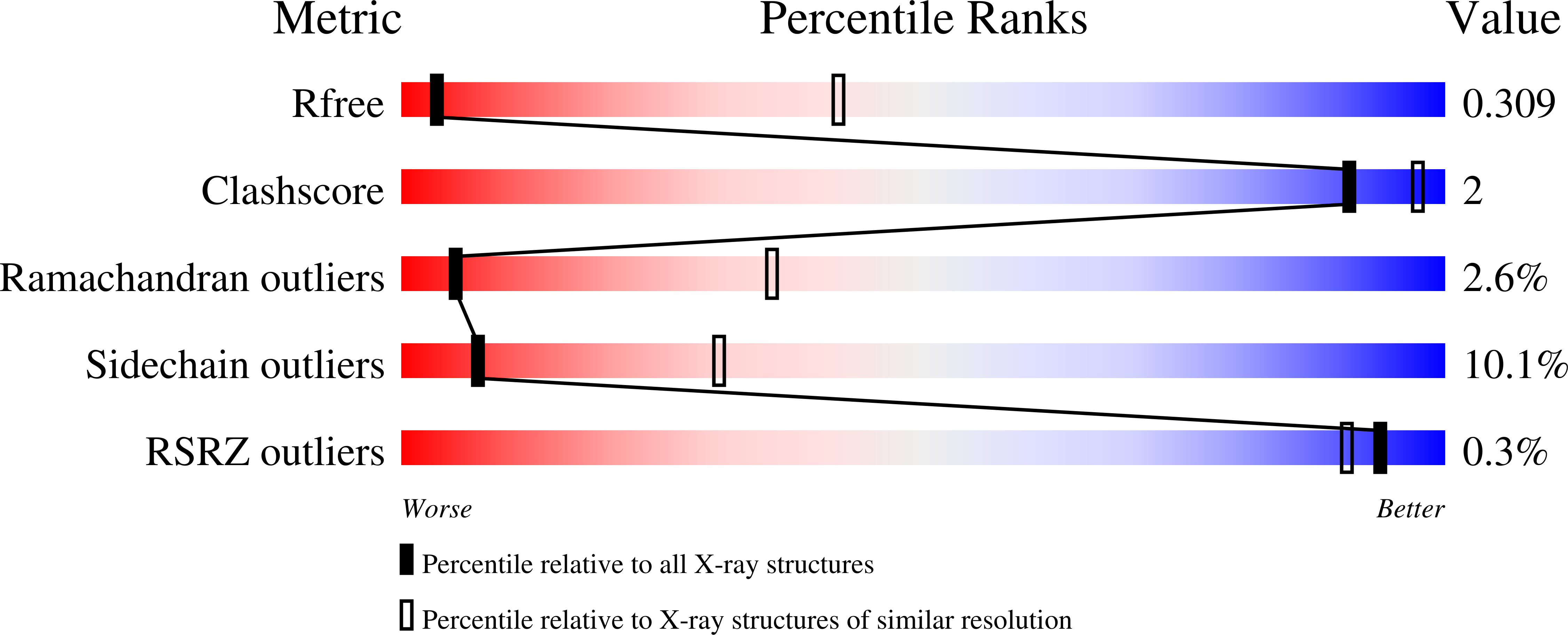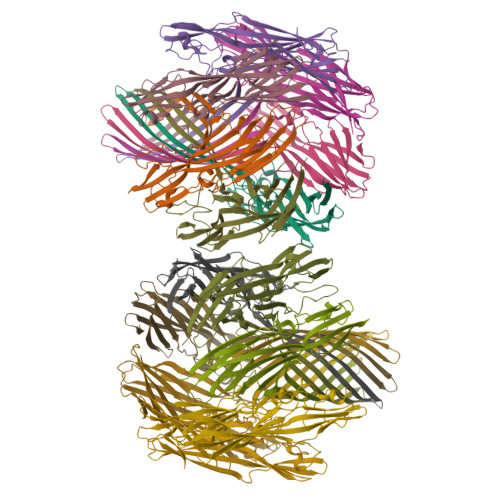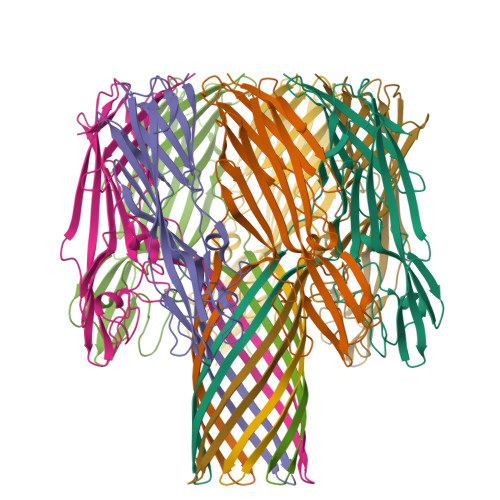Molecular Architecture and Functional Analysis of NetB, a Pore-forming Toxin from Clostridium perfringens.
Savva, C.G., Fernandes da Costa, S.P., Bokori-Brown, M., Naylor, C.E., Cole, A.R., Moss, D.S., Titball, R.W., Basak, A.K.(2013) J Biological Chem 288: 3512-3522
- PubMed: 23239883
- DOI: https://doi.org/10.1074/jbc.M112.430223
- Primary Citation of Related Structures:
4H56 - PubMed Abstract:
NetB is a pore-forming toxin produced by Clostridium perfringens and has been reported to play a major role in the pathogenesis of avian necrotic enteritis, a disease that has emerged due to the removal of antibiotics in animal feedstuffs. Here we present the crystal structure of the pore form of NetB solved to 3.9 Å. The heptameric assembly shares structural homology to the staphylococcal α-hemolysin. However, the rim domain, a region that is thought to interact with the target cell membrane, shows sequence and structural divergence leading to the alteration of a phosphocholine binding pocket found in the staphylococcal toxins. Consistent with the structure we show that NetB does not bind phosphocholine efficiently but instead interacts directly with cholesterol leading to enhanced oligomerization and pore formation. Finally we have identified conserved and non-conserved amino acid positions within the rim loops that significantly affect binding and toxicity of NetB. These findings present new insights into the mode of action of these pore-forming toxins, enabling the design of more effective control measures against necrotic enteritis and providing potential new tools to the field of bionanotechnology.
Organizational Affiliation:
Department of Biological Sciences, School of Crystallography, Institute of Structural and Molecular Biology, Birkbeck College, Malet Street, London, WC1E 7HX, United Kingdom.

















